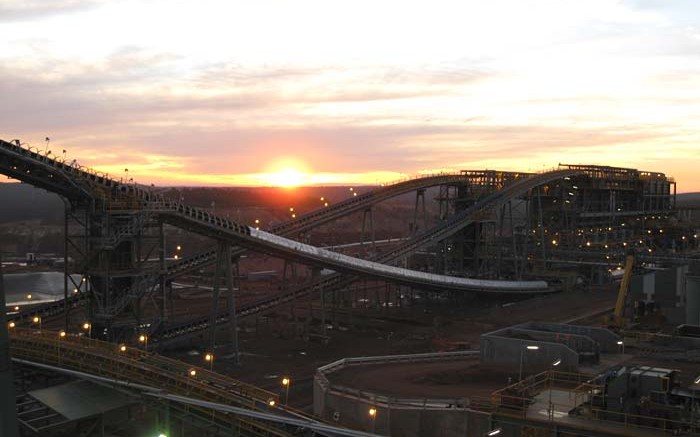It’s gotta rank right up with the worst “first dates” in recent mining history: the proposed merger between gold titans Barrick Gold and Newmont Mining broke off a week after it was made public through media reports in April, and then things soured with a flurry of rival press releases pinning the blame on the other party for the breakdown.
Barrick and Newmont executives had gone so far as to negotiate a term sheet for a merger that was signed by both parties on April 8, after months of private negotiations. It’s a deal that hearkened back to 2005–2006 — the era of the growth for growth’s sake mega-merger — and would have been the biggest merger in the history of gold mining.
But by April 28, merger discussions were officially terminated.
It didn’t stop there, however, with discreet silence or any deflecting “it’s not you, it’s me” sentiment: Barrick put out a press release and told reporters that it had wanted to finish the merger, but Newmont’s board had backtracked.
Newmont slipped that jab, came back hard with its own, by making public a private letter it had sent to Barrick’s board the week before. It tells Barrick’s directors that “while we were hopeful we could achieve that goal [of merging], it has become evident to us over the past several weeks that the type of constructive, mutually respectful and partnership-oriented relationship necessary to realize the potential benefits of that combination does not yet exist.”
Then come the zinger combination punches: “While our team has found your management team’s engagement to be constructive and professional, the same constructive nature cannot be said of our discussions with your co-chairman [John Thornton] on certain fundamental strategic and structural issues over the past two weeks. Our efforts to find consensus have been rejected out of hand repeatedly. And, as we contemplated further dialogue, we read in the continuing reporting of the transaction in the financial press a pointed characterization of our company as ‘extremely bureaucratic and not shareholder friendly.’ Nothing could be further from the truth. Moreover, none of this suggests that we have the mutual respect or shared values today that we believe are necessary for the enterprise that would result from the combination of our companies to realize its full potential.”
In round three — the third press release of the day — Barrick went hard on the offence, stating that Newmont had “sought to renege on three foundational elements of the signed term sheet: the location of the head office of the merged company in Toronto; the identification of any specific assets that would be included in a spin-off company; and the carefully constructed governance arrangements, particularly with respect to the roles and authority of the chairman, the lead director and the CEO.”
In the fourth and final press release of the day, Newmont declared that it “did not renege and strongly disagrees with Barrick’s characterization of events that followed.”
At that point, any goodwill that is a must for a merger of equals had been poisoned by personal animus between the two executive teams.
And yet, the rationale for the merger of the two companies is still elusive. Both companies have an excellent portfolio of high-quality, long-life gold mines in some of the best jurisdictions in the world, and both companies are emerging from a painful year of restructured operations, sales of underperformers, and flattened management levels that have left both companies lean, profitable and well-positioned to withstand low metal prices or benefit handsomely from any rebound. It’s hard to see where any cost-savings synergies would exist in a merged entity, even in Nevada.
Moreover, Barrick’s corporate culture is that it is the best, and therefore a merger of equals is by definition impossible. It’s an attitude that must have suffused the negotiations with Newmont from the beginning, and clearly Newmont execs — who aren’t exactly keen to hand over their company to Barrick without a takeover premium, and had wanted to play a substantial role in the post-merger company — were fed up.
By April 30, on the occasion of Barrick’s annual meeting in Toronto, the merger talk seemed like old news, and president and CEO Jamie Sokalsky only briefly alluded to it.
Peter Munk, in his final appearance as co-chairman, took the opportunity to heap praise on his successor Thornton, describing his recruitment to the firm as the “best investment I’ve ever made at Barrick, including Goldstrike.”


Be the first to comment on "Editorial: Barrick-Newmont fling ends in acrimony"